I receive error message /QTYW/QCI091: Liquid LPG volume is negative; tank almost empty, correct measurements – why is that?
For LNG, NGL and LPG, you may require vapor space calculations. You utilize the static tank dip measurement indicator, such that the vapor mass (and possibly weight and energy) is calculated and added to the total mass (and possibly corresponding total weight and total energy):
Example:
You measure 1 000 m³ of liquid product being in your tank; but you do not apply the vapor space calculation:
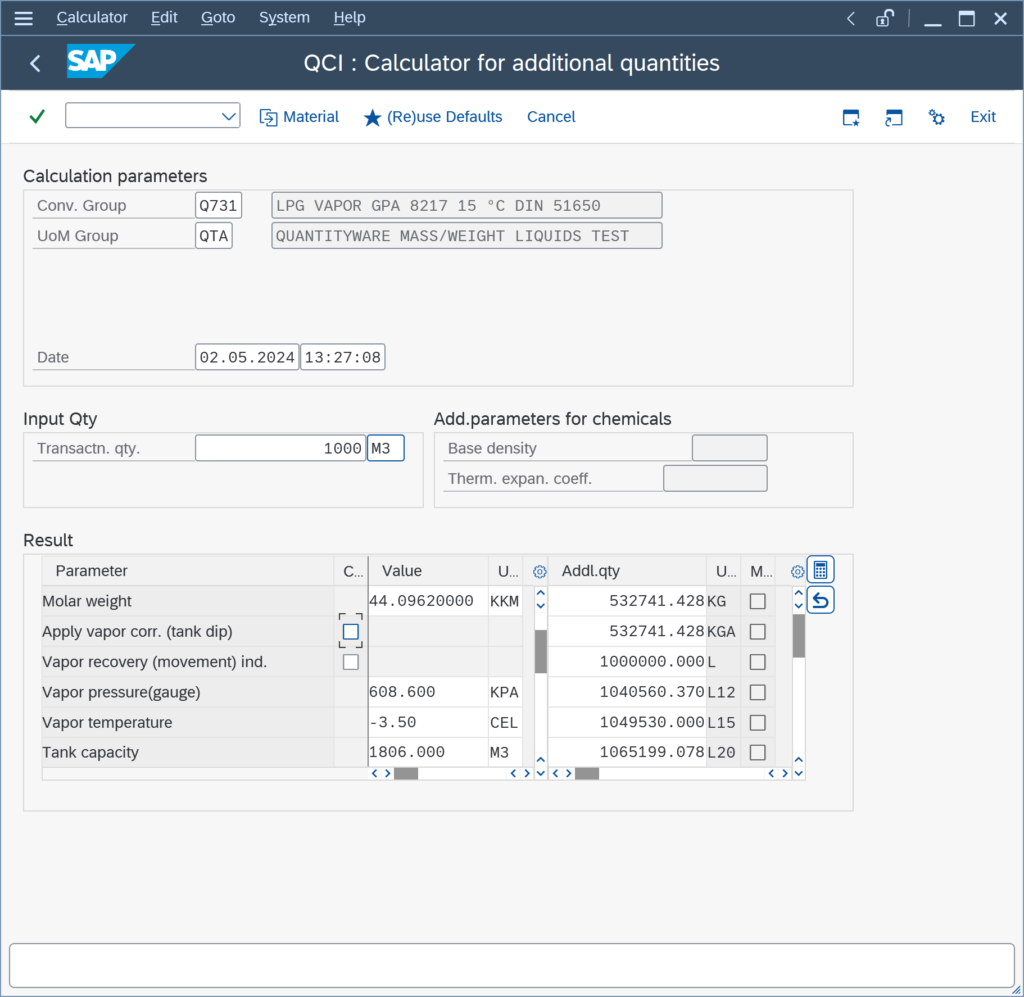
The mass of the liquid is thus calculated to be 532 741.428 kg.
Now you set the vapor space indicator and perform a second calculation:
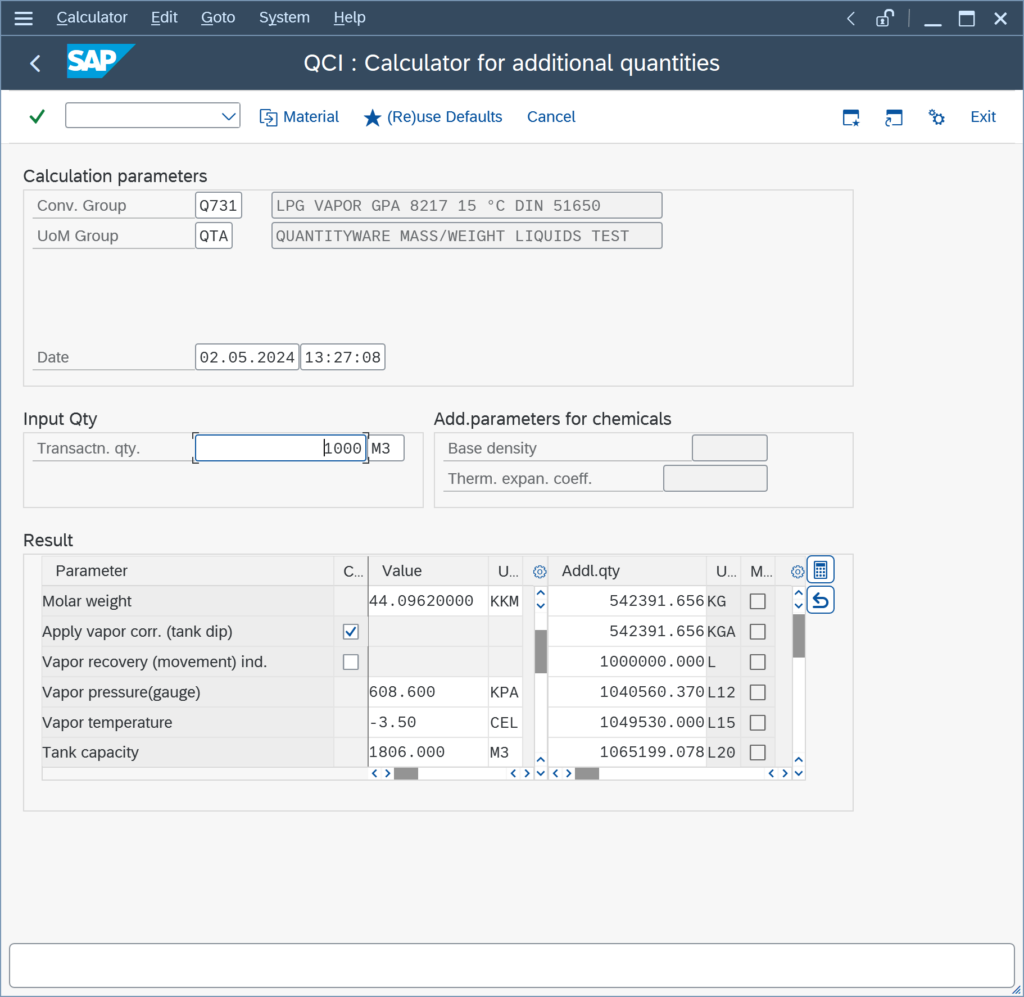
The total mass is now calculated to be 542 391.656 kg, which is the sum of the liquid mass of 532 741.428 kg and the vapor mass of 9 650.228 kg:
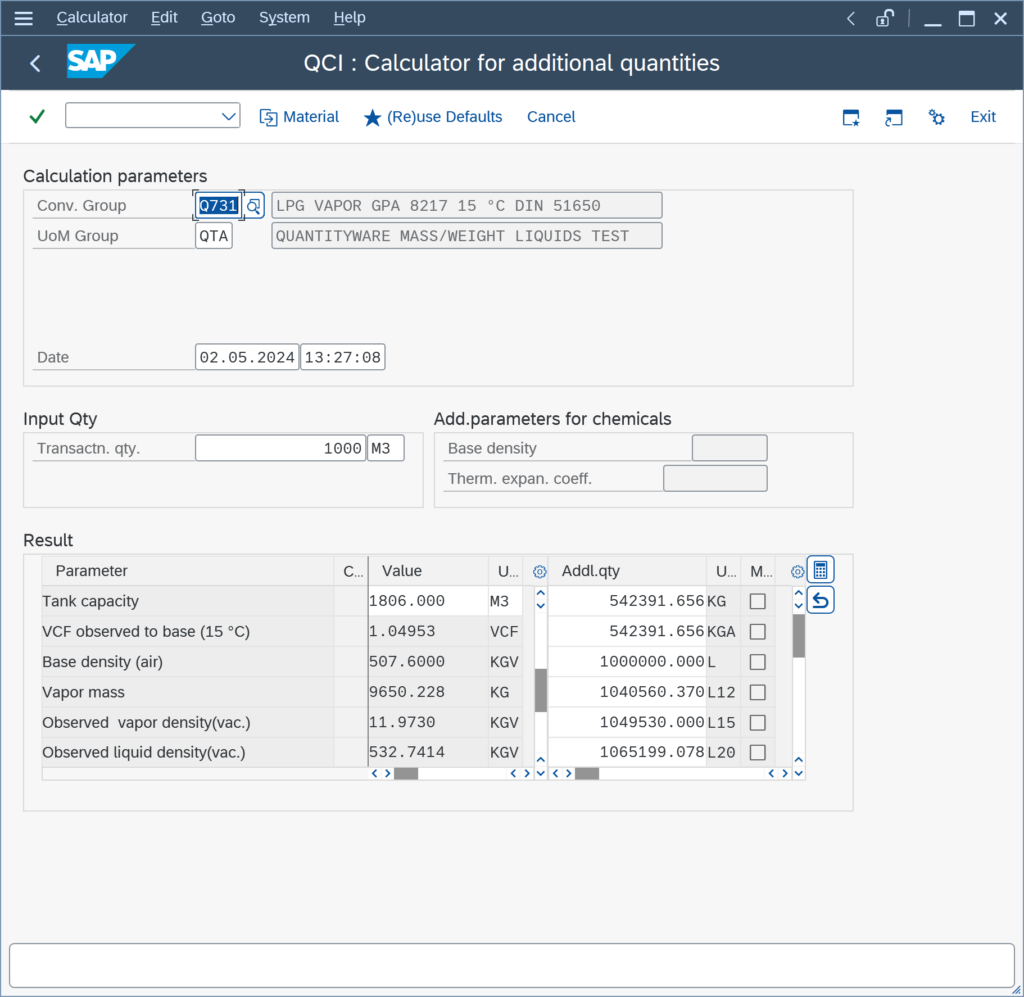
For such a static vapor space calculation, the tank capacity is required as input – among other input parameters like the vapor pressure, the vapor temperature, and the molar mass of the product.
If your transaction quantity carries a volume UoM (SAP dimension VOLUME), this volume quantity is always considered to be the liquid volume; thus, if you enter a transaction quantity of 0 m³, the tank contains only vapor:
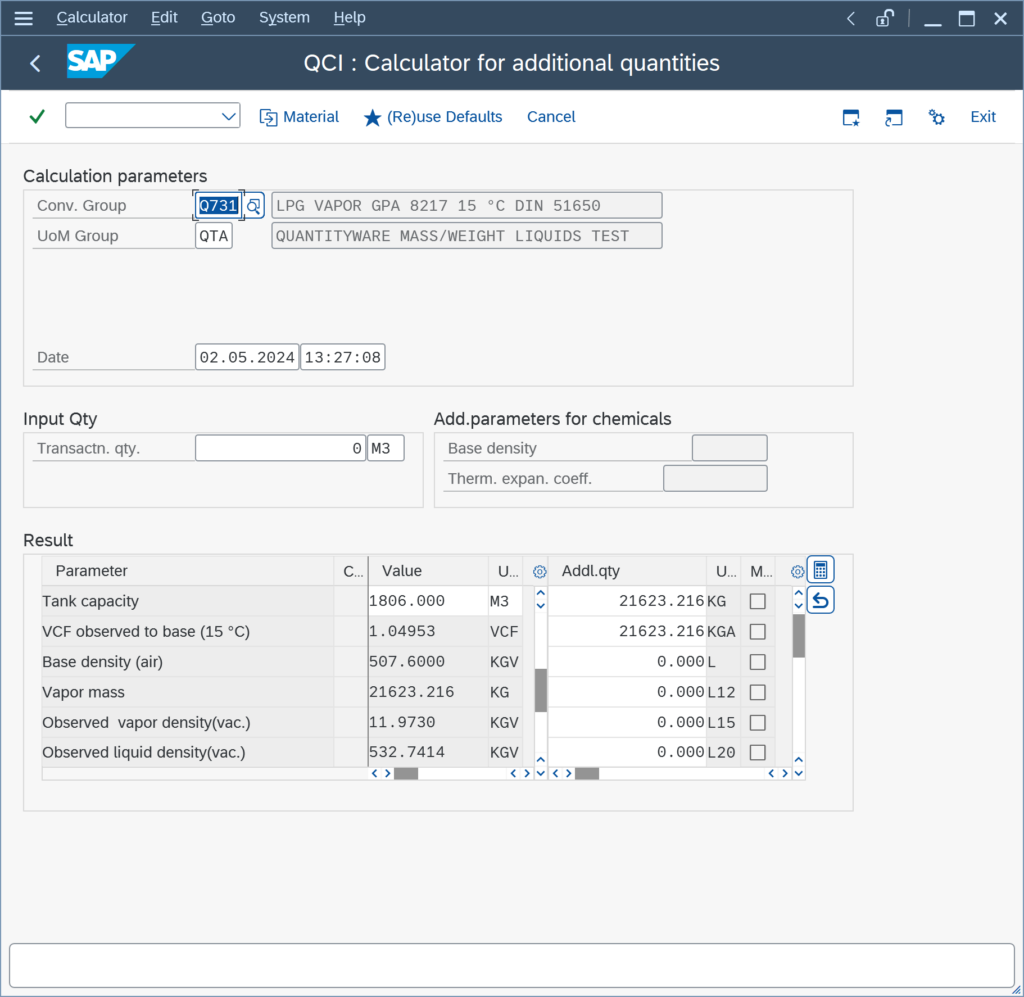
Here, the maximum vapor mass of the tank is calculated to be 21 623.216 kg.
If the liquid volume is larger than the tank capacity, you receive an error message /QTYW/QCI090: “Tank capacity is lower than observed LPG liquid volume in tank”:
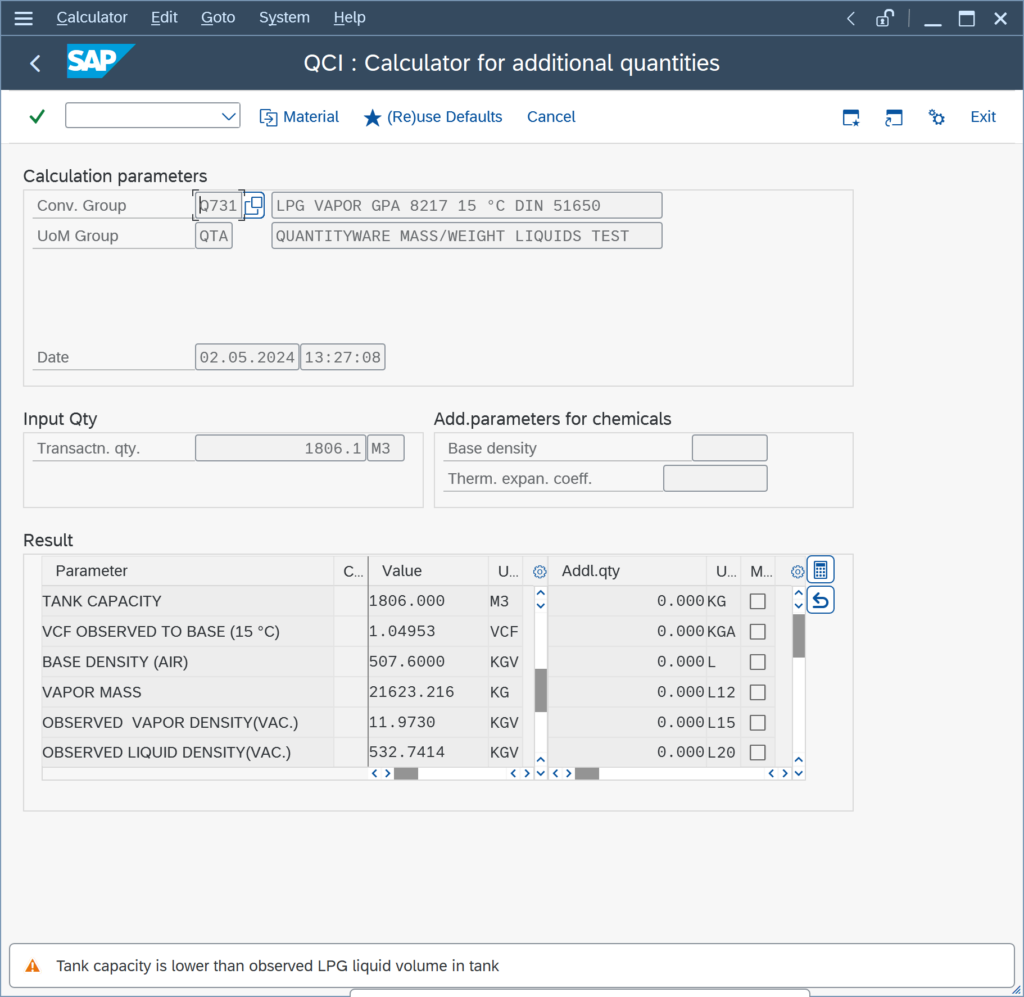
You may also utilize masses as transaction quantities and still apply the vapor space calculation:
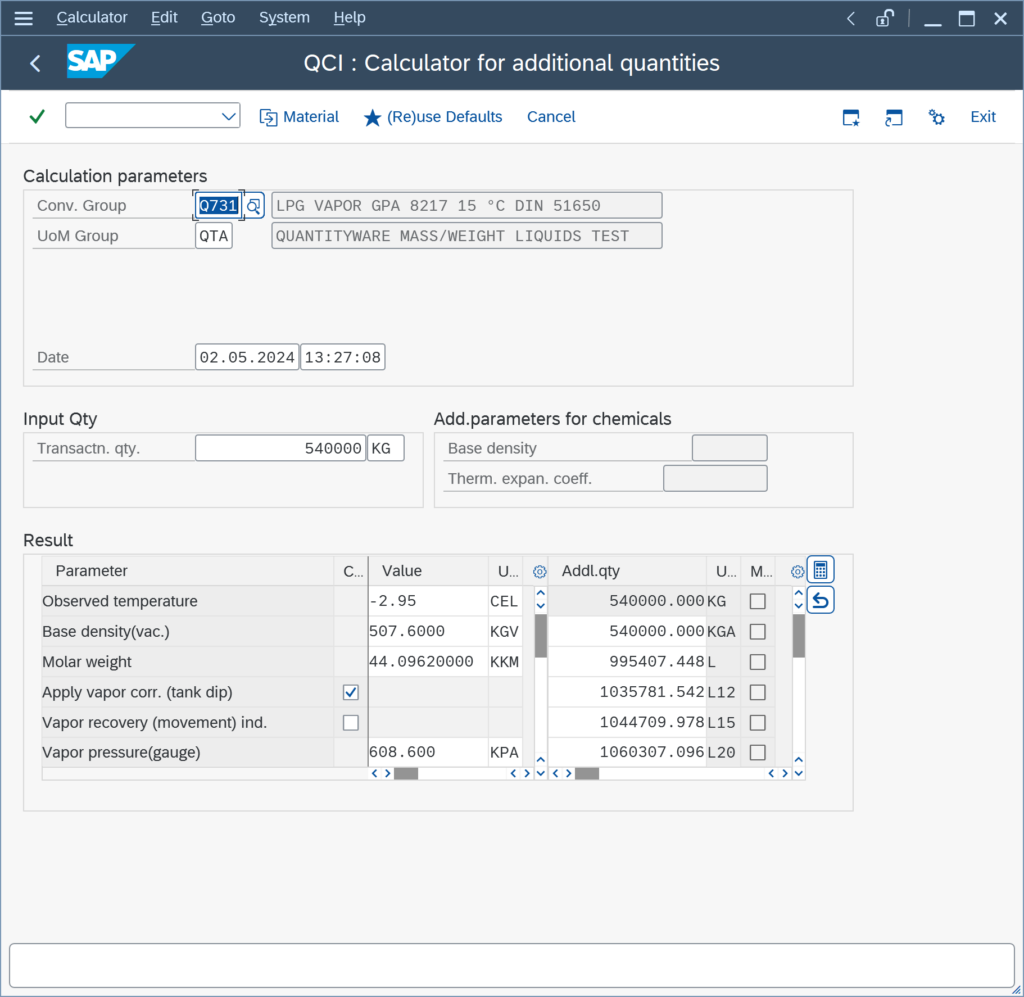
Now, however, the total mass is entered as transaction quantity; the calculation “distributes” the total mass into the vapor mass and the equivalent liquid volume mass (reverse vapor space calculation). Thus, the transaction quantity for masses must always be above the maximum possible vapor mass value, which is determined again by the tank capacity (and the vapor pressure, vapor temperature and molar mass):
The minimum allowed transaction quantity with a mass UoM is the mass of product, given when the tank is filled with vapor only. In this example, that is:
21 623.217 kg
(Next larger three decimal value of the exact internally calculated value 21 623.216 43…):
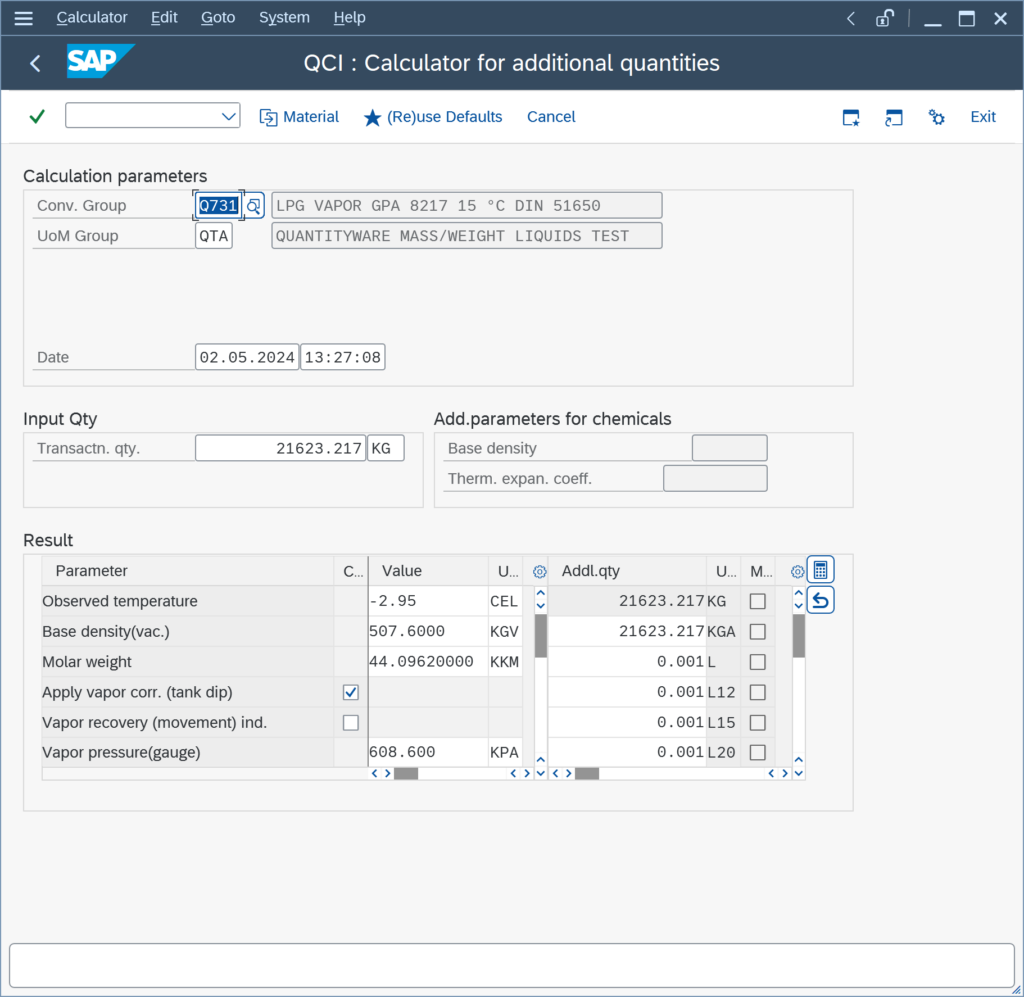
If the transaction quantity is below this mass value, error message
/QTYW/QCI091 is raised:
“Liquid LPG volume is negative; tank almost empty, correct measurements”
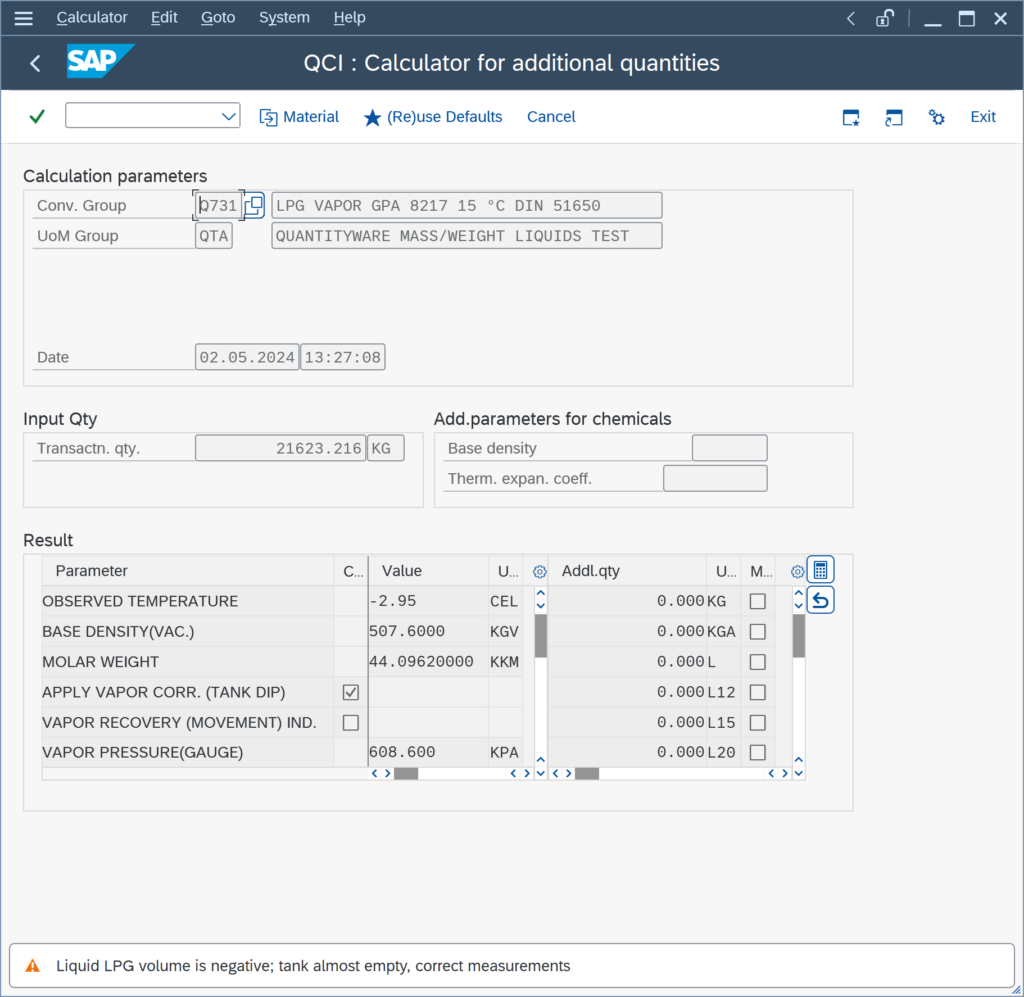
Thus, the exact tank capacity (and vapor parameters as temperature, pressure, and molar mass) must always be entered / passed to the QCI calculations for vapor space calculations to be correct, symmetric and thus meaningful.
For mass-based transactions, where you enter the total product mass, application of the reverse vapor space calculations may, on the other hand, not be required.
Read the SAP Tank Management FAQ for additional information.
Categories: BCG & BCP Configuration FAQs | BCS Messages FAQs
Back to FAQs



